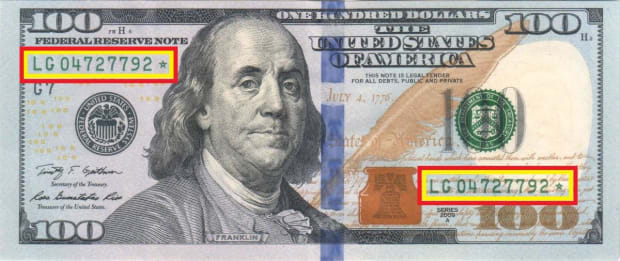That is an opinion editorial by Roy Sheinfeld, the co-founder and CEO of Breez, a Lightning Community cellular app.
The extra great one thing is, the extra ardour it’ll arouse. Bitcoin is among the many best wonders of the late-modern world, so Greg Foss is understandably very captivated with it. So passionate in reality, that he dropped 11 f-bombs in 31 seconds out of concern for its future (and this even though he’s Canadian!).
Why is such a stalwart Bitcoin proponent so involved? As a result of two guys in cheap wizard costumes did a cringey Fortnite dance? Absolutely the stakes have to be larger.
In keeping with some, there’s a battle underway for the long run and soul of Bitcoin. In keeping with others, we’ve simply gained a enjoyable, nerdy and innocuous technique to play with Bitcoin that makes it even funner and nerdier, although no much less revolutionary.
Ordinals, inscriptions and the BRC-20 protocol are the bone(s) of rivalry. Ordinals enable particular person sats to be recognized; inscriptions enable objects like textual content, pictures and knowledge information to be written onto them; and BRC-20 permits second-order tokens to be minted instantly onto them, like an Ethereum-lite. In impact, they introduce storage as a brand new use case for the Bitcoin blockchain along with its current and principal use as a ledger for foreign money transactions. These options are affecting block sizes, transaction charges and validation occasions, in order that they’re not inconsequential.
The bone of rivalry is what they imply for Bitcoin’s future. Are they pathological, like a tumor? Do they provide a aggressive benefit, like chlorophyll and claws? Or are they simply innocent and benign, like male nipples or that little dangly factor on the prime of your throat?
Ordinal ABCs One, Two, Threes
Of the current developments in Bitcoin listed above, Ordinals got here first. Casey Rodarmor, the man who “invented” Ordinals (this time round), sought to plan “secure identifiers that could be utilized by Bitcoin functions.” In different phrases, he needed to index sats by giving every one a serial quantity that will survive throughout time and UTXOs.
In fact, giving every sat a singular identifier signifies that they’re not completely fungible as a result of they’re not strictly an identical, when making use of the Ordinal conference. Identical to the Library Of Congress Classification (LCC) system for books in analysis libraries or URLs for net pages, Ordinals make every sat distinctive and retrievable. Identifiability impacts fungibility with out eliminating it.

Inscriptions are the second controversial, current growth on the planet of Bitcoin. The “Ordinal Concept Handbook” offers a marvelously succinct definition of inscriptions, helpfully relating them to Ordinals:
“Inscriptions inscribe sats with arbitrary content material, creating bitcoin-native digital artifacts, extra generally generally known as NFTs… These inscribed sats can then be transferred utilizing bitcoin transactions, despatched to bitcoin addresses, and held in bitcoin UTXOs. These transactions, addresses, and UTXOs are regular bitcoin transactions, addresses, and UTXOS in all respects, with the exception that with the intention to ship particular person sats, transactions should management the order and worth of inputs and outputs in response to ordinal principle.”
In fact, Bitcoiners are far too refined to get suckered into all that Bored Ape nonsense. If we had been to copyright cartoons on our blockchain, we’d do wizards as a substitute of apes. I imply, apes? C’mon.
No matter. Consider inscriptions like blockchain tattoos. Some persons are going to like them, others are going to disdain them. The world (and the witness knowledge of a transaction) is sufficiently big for each.
The third current growth in Bitcoin is the BRC-20 protocol, which lets individuals mint and distribute tokens in response to predefined parameters. These tokens are written as inscriptions onto sats marked with Ordinals, which brings us full circle. These three options enable customers to create digital artifacts/NFTs and to make use of the Bitcoin blockchain to distribute and commerce them.
So, how’s it going? Not surprisingly, some persons are interested in explicit numbers, like one, seven or 69,420, so some sats are coveted as a result of Ordinals have made them “uncommon” (though, if you consider it, every Ordinal quantity is exclusive, so every one is strictly as uncommon because the others).
There’s additionally a marketplace for BRC-20 tokens, a lot of that are simply second-order bitcoin. For instance, the $OG$ token and the $PIZA token each have a provide of 21 million (similar to bitcoin) and, at one level, had market caps of round $10 million.
The upshot is that:
- Sats are actually uniquely identifiable in response to a brand new conference
- Folks can add knowledge to sats
- Token-minting algorithms are a type of inscription knowledge, so individuals can mint tokens on the Bitcoin blockchain

It’s essential to notice that, whereas Ordinals, inscriptions and BRC-20 are current developments in how Bitcoin works and the way we use it, they’re probably not “improvements” as a result of they’re probably not new. One thing like Ordinals was proposed below the identify BitDNS again in 2010. Utilizing OP_RETURN to retailer strings of information on UTXOs goes again almost a decade. And minting second-order “tokens” on an underlying blockchain is mainly the concept behind Ethereum, which isn’t actually new. (Hat tip to Giacomo Zucco, who took a deep dive into this in a presentation he gave in Prague.)
Plus ça change…
What This Means For Bitcoin: Transaction Charges
Ordinals, inscriptions and BRC-20 tokens are, in fact, controversial. Although some love them, because the transaction charges of current months attest, others are bemused or irritated. Even the man who invented BRC-20 has said, “These shall be nugatory. Please don’t waste cash mass minting.”
OK, however “nugatory” isn’t a synonym for “evil.” Some individuals assume tattoos and Large Macs are nugatory, different individuals love them. So, what’s the massive deal?
Opposition to Bitcoin’s new options normally stems from the suppositions that:
- Ordinals and inscriptions make bitcoin much less like cash
- They make transactions dearer
Let’s cope with the final level first. Thanks partly to Ordinals, the variety of transactions within the mempool has elevated by about two orders of magnitude, and the information within the backlog has elevated about 150 occasions.
The consequences are ambivalent. On the one hand, extra knowledge per transaction will increase the storage and computing burdens for node operators, for which they obtain no compensation. Not nice.
Alternatively, extra knowledge to compute means larger charges for miners. The truth is, the typical on-chain transaction charge reached $30.91 lately. Excessive on-chain transaction charges will not be evil. The truth is, excessive charges are factor. They incentivize miners, which attracts miners and spurs them to speculate, which retains the hash fee excessive and makes Bitcoin safer. That’s about as evil as a St. Bernard carrying a cask of brandy.

Furthermore, excessive on-chain charges merely reinforce the totally different use instances between on-chain bitcoin and sats on the Lightning Community. On-chain funds have arguably by no means been nicely fitted to fast microtransactions as a result of they deal with small and huge transactions just about the identical. In contrast, Lightning charges are proportional to the transaction quantity. When you’re paying two-, or three- or 10 occasions the worth of your beer or pizza in transaction charges for an on-chain fee when you can be paying one one-thousandth of it on Lightning, you’re doing it incorrect.
If on-chain charges are inhibiting you from paying with bitcoin, then it’s best to in all probability benefit from Lightning’s proportional charges. If Lightning charges are inhibiting you from paying with bitcoin, then it’s best to in all probability benefit from the one-size-fits-all, on-chain charges.
What This Means For Bitcoin: Cash-ness
As for whether or not bitcoin remains to be cash in a world of ordinals, there are a few methods to reply that query. First, we may comb via numerous definitions of what cash is, give you the final word record of standards and use it to guage the Bitcoin white paper and all subsequent protocols. Aristotle could be proud, however the reply could be unnecessarily theoretical and summary.
Alternatively, we may truly observe what persons are doing on the market on the planet. Nevertheless smart this new use case is, individuals like inscriptions and are prepared to pay for them.
- Whom are they paying? Miners.
- How are they paying? Transaction charges.
- What are miners doing with the transaction charges? Reinvesting some to cowl the prices of mining extra bitcoin.
- The place does that bitcoin go? From the miners out into the world, the place it circulates.
And there we’ve it: fee and circulation. Folks pay miners, miners pay individuals, they’re utilizing bitcoin, ergo bitcoin is cash. We’ve discovered the essence of foreign money and not using a dictionary (sorry Aristotle).
In different phrases, bitcoin remains to be cash, however the Bitcoin blockchain can additionally be used for storage. Observe the Boolean operator: (cash and storage) not (cash or storage). Certainly, including new, smart use instances is perhaps a prerequisite for any foreign money from this level ahead. The query is merely, what counts as “smart”? However time — and the market — will inform.
Good, Dangerous Or Benign?
So, allow us to return to the unique query: Are Ordinals, inscriptions and BRC-20 good or unhealthy for Bitcoin? Or are they only a new function of the world that we’ll adapt to with out a lot consequence?
Effectively, these capabilities weren’t on the prime of my private record of priorities. I can’t say that Taproot Wizards or “Ordinal tokens” are actually making the world a greater place.
However I don’t concern these developments both. They increase charges, and better charges have helpful uncomfortable side effects for the blockchain. What’s good for Bitcoin is sweet for the world, whether or not it’s intentional or not.
And so they reinforce the case for Lightning as a low-fee means to make use of bitcoin as cash for smallish, on a regular basis purchases and transfers. Usually, what’s good for Lightning is sweet for Bitcoin, which is sweet for the world. Wizards GIFs and subsidiary tokens can’t actually do a lot hurt, so I’m simply gonna keep cool, stack sats and proceed making Lightning nearly as good as it may be.
This can be a visitor put up by Roy Sheinfeld. Opinions expressed are totally their very own and don’t essentially replicate these of BTC Inc or Bitcoin Journal.
